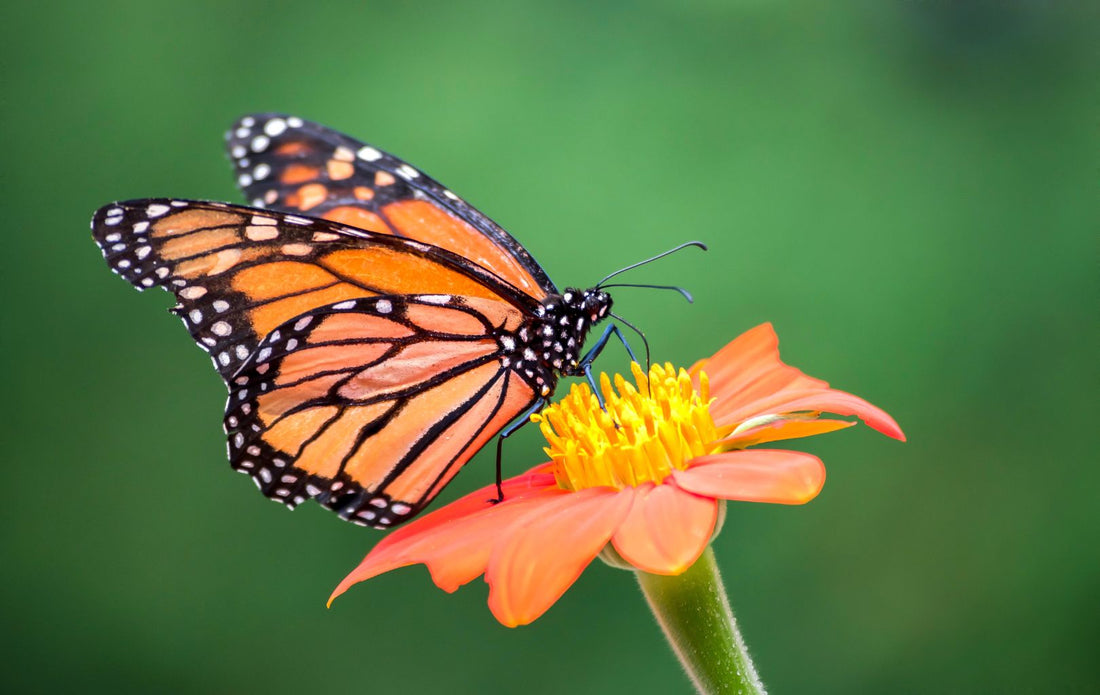It’s More Than Just a Pretty Garden
Chloe Williams •
The manicured lawns and concrete landscapes of our cities have created vast 'food deserts' for our most essential pollinators. But a powerful solution is growing in our own backyards.
Share

When you think of a bee, you probably picture it buzzing around a perfect, colourful garden. But for many of North America's 4,000 native bee species, finding that next flower is becoming a life-or-death struggle. The manicured lawns and concrete landscapes of our cities have created vast "food deserts" for these essential pollinators, contributing to their alarming decline.
The good news? A powerful solution is growing in our own backyards, balconies, and schoolyards. Recent studies are proving that even small patches of native wildflowers can act as critical lifelines, reversing the damage of habitat loss one garden at a time.
The Problem: Islands in a Concrete Ocean
For a bee, a city can feel like a vast ocean with only a few scattered islands to rest and feed on. This "habitat fragmentation" is one of the biggest threats to pollinators. A single garden might be a great food source, but if the next one is too far away, bees can’t make the journey. This isolation weakens populations, reduces genetic diversity, and ultimately leads to local extinctions.
Without a connected network of safe havens, bees lack consistent access to two things they need to survive:
- Food: A steady supply of nectar (for energy) and pollen (for protein to feed their young).
- Shelter: Safe places to nest, like hollow plant stems, undisturbed soil, or abandoned beetle burrows.
The Solution: Building a Bee Highway
This is where our gardens become so much more than just decoration. Scientists call them "ecological corridors" or "pollinator pathways." When we plant native flowers, we are building a series of stepping stones that bridge the gaps between larger green spaces like parks and ravines. We are essentially creating a highway for bees and other pollinators.
A 2023 study from the University of Guelph found that urban neighbourhoods with just 10% of their yard space dedicated to native plants supported double the diversity of wild bees compared to neighbourhoods without them. These micro-habitats allow pollinators to move, feed, and reproduce, strengthening the entire urban ecosystem.
Why Native Plants Are a Bee's Best Friend
Not all flowers are created equal. While many common garden plants look beautiful, they can be useless to our local pollinators. Native bees and native plants co-evolved over thousands of years, creating a perfect partnership.
- The Right Food: Native plants produce the specific type of pollen and nectar our local bees are adapted to digest.
- The Right Timing: They bloom at the exact times of year—early spring, mid-summer, and late fall—when different bee species are active and need food the most.
- The Right Home: Plants like Bee Balm, Coneflower, and Goldenrod have hollow or pithy stems that provide ideal nesting cavities for many solitary bee species long after the flowers have faded.
At our own Demonstration Habitat at Metro Prep, we’ve tracked a 40% increase in native bee sightings since converting a patch of lawn to a garden of native Ontario wildflowers last year. We've spotted sweat bees, mason bees, and bumblebees—all thanks to providing the right plants.
Your Garden is a Statement
Planting a patch of native wildflowers is a radical act of hope. It’s a choice to turn a small piece of land back over to nature. It’s a declaration that our yards can be more than just pretty—they can be productive, living ecosystems.
Every Bloom Kit planted is another vital stop on this growing pollinator highway across North America. You’re not just planting flowers; you’re building a sanctuary and becoming part of a continent-wide conservation effort.

